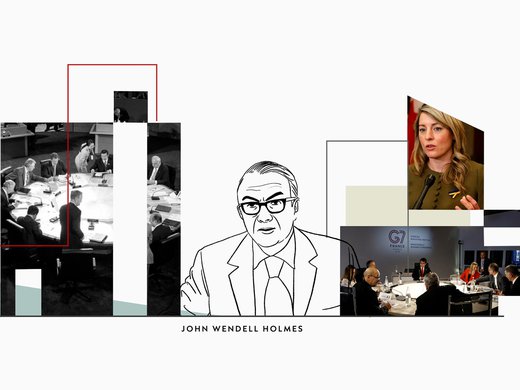I think the followers of the UN’s Twitter account were supposed to be impressed. The institution last week sent around a video that described the Paris climate jamboree —otherwise known as the 21st Conference of the Parties, or COP 21 — in terms of some really big numbers: 45,000 attendees, officials from 196 countries, 166 proposals to reduce greenhouse gas emissions, etc. And they say the G20 is too big to get anything done! Actually, the G20 is too big to get much of anything done, which is why the UN’s COP 21 headcount should generate a healthy amount of skepticism about the world’s ability to keep the planet’s temperature from rising more than 2 degrees Celsius from pre-Industrial levels.
After years of watching electoral politics in the United States, Canada and Australia block any significant progress on climate change, it is rather shocking to see so many apparently green leaders gathered in one place. And it is awe-inspiring to witness tens of thousands of people descend on Paris to fight for the planet. Impressive announcements will be made. An agreement most likely will be reached. That’s assured by the advance work of the host government and the fact that US President Barack Obama has nothing at stake in any election that will occur before the end of his presidency. There clearly is momentum for change. There even is money. But is there focus? All those thousands of people in Paris represent dozens of ideas about how to cool the planet. But those ideas aren’t equally efficacious. The battle against carbon will be won by making it more expensive than cleaner alternatives. Anything else is a well-meaning distraction.
Take green bonds, debt that is issued for the sole purpose of financing clean infrastructure. They sound wonderful in theory. India already has used such assets to raise $1-billion (US) for solar, wind and other renewable projects. Yet economist James Haley reckons green bonds only will soak up capital that would have been used to finance clean energy anyway. Projects that generate rates of return comparable to selling oil or coal don’t need special funding drives. Furthermore, investors who are prepared to accept less-than-maximum profit for the good of the planet probably don’t need to be coaxed into doing so -- but they surely will grab any carrots governments dangle. “If Green Bonds are merely a fashion statement and are viewed as a substitute for measures to alter the relative return on carbon-based and green projects, through carbon taxes, for example, questions could legitimately be raised whether they are worth the effort,” Haley wrote last week on his blog, The New Age of Uncertainty.
Assaad Razzouk, chief executive of Singapore-based Sindicatum Sustainable Resources, argues that climate activists have a lot to learn from their brothers and sisters in the movement to end HIV/AIDS. The human immunodeficiency virus and acquired immune deficiency syndrome still represent a grave threat to human health, especially in poorer countries. But no longer is the virus the killer it was when it was discovered in the 1980s.
Razzouk argued in a TEDx talk earlier this year that the HIV/AIDS movement was successful because it kept things simple. According to Razzouk, campaigners had one target and one goal. They went after pharmaceutical companies, which were profiting greatly from expensive AIDS medication, and they made achieving universal access to affordable treatment their priority. “The climate movement today, we, are all over the place,” Razzouk said in his April talk at the University of Edinburgh. “We are far too spread out.”
The danger of dozens of good ideas and intentions showed up in Centre for International Governance Innovation Fellow Jason Thistlethwaite's paper on how financial markets account for climate risks. Thistlethwaite highlighted the carbon-curbing potential of forcing companies to transparently account for their exposure to a warming planet. Doing so would be another way of putting a price on carbon. Insurance firms face higher claims from extreme weather events. Fossil-fuel companies and their shareholders could be sued for billions of dollars in damages to the planet just as tobacco companies were. Private-equity funds and banks could face losses if they are overexposed to coal and oil companies whose current value is tied to reserves that could be stranded by the shift to clean energy. Yet there is no standard for reporting climate liabilities. Instead, there are competing voluntary reporting schemes, both private and public, that have done little, if anything, to dissuade oil-and-gas companies from prospecting.
Thistlethwaite said international financial regulators should give market forces a chance to make life more expensive for carbon emitters by standardizing the reporting of climate liabilities. Mark Carney, the governor of the Bank of England and head of the Financial Stability Board, agrees with him. It’s a start. Meanwhile, Razzouk will be attempting to make the battle against climate change more like the fight against AIDS. He says 90 oil, gas, coal, and cement companies are responsible for two thirds of greenhouse gasses in the atmosphere. Like Carney and Thistlethwaite, Razzouk wants those companies’ cost of capital to reflect the damage they are doing to the planet. The crux of his TEDx talk was to spark a campaign to lobby pension funds to demand larger risk premiums from carbon companies. “Price them out,” he said. “Make their cost of money higher.”
Simple. But there is nothing simple about the climate strategy that seems to be emerging at COP21. I was reminded recently that William Faulkner advised writers to “learn to kill their little darlings.” I dutifully went through this post and did away with needless prose before sending it to Waterloo for publication. It’s now the climate movement’s turn for some self-editing. It has many darlings, but there is only one that counts.


